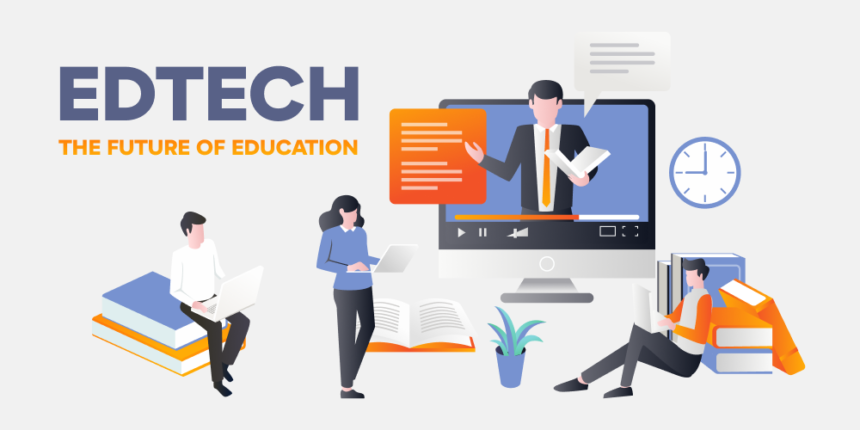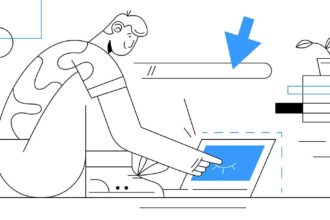The Silent Rise of Nigerian Edtech: Who’s Leading the Revolution?
Introduction
In recent years, Nigeria has quietly become a powerhouse in the education technology (edtech) space. What started as small pilots in Lagos classrooms or university computer labs has grown into a nationwide movement. Parents, teachers, students, and investors are all noticing how digital tools are changing the way learning happens. This is the story of the silent rise, and the key players behind it.
- The Silent Rise of Nigerian Edtech: Who’s Leading the Revolution?
- Introduction
- Why Nigeria’s Edtech Matters
- What Makes the Nigerian Edtech Scene Different
- Key Players Leading the Revolution
- What Students Are Getting from Edtech in Nigeria
- Why Teachers Are Embracing Edtech Too
- Challenges to Overcome
- How to Assess the Top Players in Nigerian Edtech
- Strategies That Push Growth and Impact
- What the Market Looks Like Going Forward
- How to Choose the Right Platform for Your Needs
- Conclusion: the road ahead for Nigerian edtech
Why Nigeria’s Edtech Matters
Nigeria has the largest population in Africa, with a booming youth cohort. This creates a big need for affordable, scalable learning solutions. Edtech offers a way to reach students who may not have easy access to quality teachers or resources. For many learners, online platforms provide flexible study times, bite-sized lessons, and practice that helps them stay on track.
What Makes the Nigerian Edtech Scene Different
- Local Relevance: Courses and content often reflect local curricula and languages. This helps students connect what they learn in class with real life in their communities.
- Affordability: Many platforms offer low-cost subscriptions, micro-courses, or free access to essential materials. This matters in a country where household budgets can be tight.
- Mobile-First Access: With high mobile phone usage, several edtech products are designed to work well on smartphones, sometimes with offline features for areas with limited internet.
Key Players Leading the Revolution
1. Local Startups with a Big Reach
A number of Nigerian edtech startups started small but grew rapidly through partnerships with schools, ministries of education, and telecom companies. They provide digital classrooms, practice exercises, and exam prep that align with Nigerian exams like WAEC, NECO, and UTME. These platforms often combine video lessons, quizzes, and progress tracking to keep students motivated.
2. Public–Private Partnerships
Government agencies and private firms have teamed up to bring digital learning into public schools. Some initiatives include shared devices, offline content libraries, and teacher training programs. When schools swap traditional chalk and talk for interactive tools, student engagement tends to rise.
3. Universities Driving Innovation
Several Nigerian universities are experimenting with edtech to support remote learning, campus-wide e-libraries, and research collaboration. They also spin out student-led startups, bringing fresh ideas to the market and creating talent pipelines for the broader economy.
4. Tech Giants and Telecoms Backing Education
Large technology companies and telecom providers are investing in Nigeria’s edtech ecosystem. They bring scale, infrastructure, and data insights that help edtech platforms improve. This support helps keep prices affordable and improves reliability for students who depend on online learning.
What Students Are Getting from Edtech in Nigeria
- Flexible Learning: Students can study at their own pace, which helps those balancing school with work or family duties.
- Practice and Feedback: Interactive quizzes and simulations give immediate feedback, making practice more effective.
- Access to Diverse Resources: From video tutorials to digital textbooks, learners can explore topics beyond what is available in a single classroom.
- Exam-Focused Prep: Specialized courses help students prepare for national exams with practice tests and study guides.
Why Teachers Are Embracing Edtech Too
- Time-Saving Tools: Teachers can assign digital lessons, monitor progress, and provide targeted support without extra paperwork.
- Data-Driven Insights: Learning analytics show where students struggle, so teachers can tailor instruction.
- Professional Development: Online courses help teachers stay current with new teaching methods and tools.
Challenges to Overcome
- Internet Access: While mobile connectivity improves, some areas still have slow or unreliable internet. Edtech platforms that work offline or with low bandwidth are especially valuable.
- Device Availability: Not every student owns a smartphone or computer. Solutions that work on shared devices or school-provided tablets help bridge the gap.
- Digital Literacy: Both students and teachers may need training to use new tools effectively. Ongoing support and simple interfaces matter.
- Content Quality and Alignment: Ensuring that content matches national curricula and exam standards is essential for trust and adoption.
How to Assess the Top Players in Nigerian Edtech
- Content Alignment: Does the platform map to WAEC, NECO, and UTME syllabi? Are there mock exams that mirror real tests?
- Accessibility: Can learners use the platform with limited data? Are there offline options?
- Language and Cultural Relevance: Is content available in English and local languages where useful? Does it reflect Nigerian contexts?
- Price and Value: Are there free tiers or affordable plans? Do paid plans offer meaningful features like personalized coaching or progress tracking?
- Local Partnerships: Does the platform work with schools, libraries, or government programs? Strong partnerships often indicate long-term viability.
- Support and Safety: Is there customer support in local time zones? Is student data kept private and secure?
Strategies That Push Growth and Impact
- Community-Centered Models: Edtech that involves parents, guardians, and local communities tends to see higher adoption. Clubs, study groups, and family dashboards can boost engagement.
- Local Content Creators: Partner with Nigerian educators to develop courses that reflect local needs, exams, and industry opportunities. This also supports job creation in the education sector.
- Data-Driven Improvements: Collect lesson completion data, time-on-task, and assessment results to refine content and teaching approaches.
- Hybrid Learning Blends: Combine online lessons with in-person sessions. This can maximize the strengths of both formats and reach more students.
- Career-Focused Tracks: Offer STEM, business, agriculture, and digital skills courses aligned with local job markets to improve employability.
What the Market Looks Like Going Forward
- Growth in Rural Areas: As mobile networks expand, more students in rural communities will gain access to learning platforms.
- More Funding: Investors are drawn to scalable education tech with clear social impact and solid business models.
- Policy Support: Governments may introduce subsidies, device programs, or digital literacy training to accelerate adoption.
- International Collaboration: Nigerian edtech firms may partner with global platforms to share content, technology, and expertise.
How to Choose the Right Platform for Your Needs
- If You Value Flexibility and Self-Paced Study: Look for platforms with clear progress dashboards and offline content.
- If You Want Exam Readiness: Choose platforms with practice tests, past papers, and scoring analytics tailored to WAEC, NECO, and UTME.
- If You Need Affordability: Seek free access options, student discounts, or schools that provide group licenses.
- If You Prioritize Local Relevance: Pick platforms featuring Nigerian curricula, local case studies, and English plus local language options where available.
- If You Require Teacher Support: Check for channels that connect students with tutors or mentors for personalized help.
User also read: iPhone 17 Pro for Content Creators: Features, Upgrades, and Must-Know Insights
Conclusion: the road ahead for Nigerian edtech
The silent rise of edtech in Nigeria is a story of smart solutions meeting real needs. It is driven by ambitious startups, supportive partnerships, and a growing culture of digital learning. Yet, the journey is not complete. Access remains uneven, and success will depend on sustained investment in infrastructure, teacher training, and thoughtful content that truly reflects local realities.
What this means for students, teachers, and investors
- For students, edtech can unlock flexible learning paths and sharper exam readiness, but only if tools work reliably on low-bandwidth networks and common devices.
- For teachers, digital platforms offer powerful ways to tailor instruction and monitor progress, provided there is ongoing professional development and user-friendly interfaces.
- For investors and policymakers, the opportunity is significant but requires a clear focus on scalability, local relevance, and classroom impact. Partnerships with schools, libraries, and community centers can amplify reach.
A hopeful outlook If the current momentum continues—with affordable models, offline capabilities, and content aligned to WAEC, NECO, and UTME—the impact can be transformative. Expect more local content creators, stronger public–private collaborations, and a new generation of Nigerian learners who can compete on a global stage.
Image source: Wearetopgroup.com





